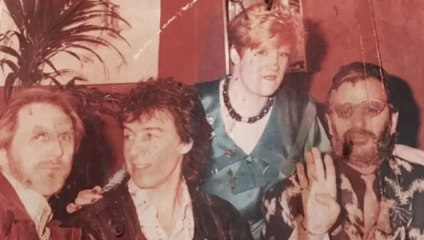5 Things (We’d Bet) You Didn’t Know About…Fitzrovia
The area now know as Fitzrovia doesn’t draw in the crowds in the same way as Bloomsbury or Marylebone either side of it, and its boundaries aren’t clearly defined, but it does have a distinctive feel to it - sort of sophisticated and serene (especially given that it sits just north of the noise of Oxford Street). Next time you’re passing through, do so with a sense of its history, which is more interesting than you might think...
By James Stokes | Updated Apr 13 2024
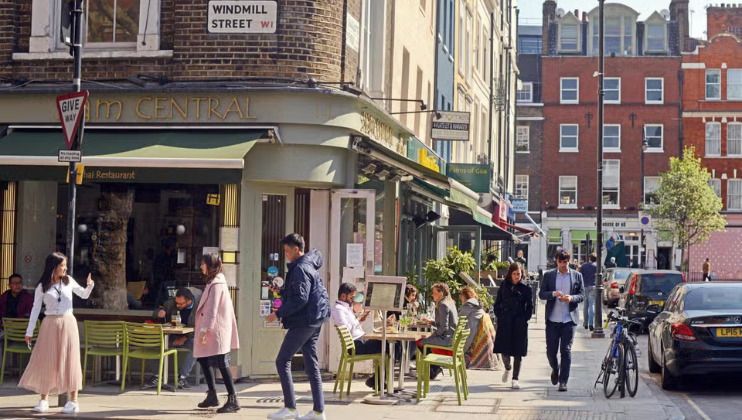
Whats in a Name?
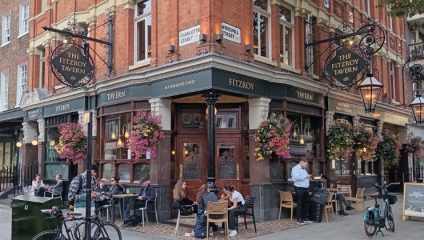
Before it was first officially referred to as ‘Fitzrovia’ on maps in the 90s, the area between Fitzroy Square and Oxford Street (which in the 18th century had belonged to Charles Fitzroy and formed the grounds of his nearby residence Tottenham Manor) was largely seen as the northern extention of Soho - in fact, some still refer to it as ‘Noho’.
Since it was established in 1919, The Fitzroy Tavern pub became a popular drinking hole for artists drawn to the area for its cheap studio space and proximity to The Slade School of Art at University College London; from the 1920s through to the 40s it saw many colourful characters pour through its doors, including the painter Augustus John (who was forever attempting to seduce women there to appease his crippling fear of being alone) and the so-called ‘Queen of Bohemia’, Welsh artist and writer Nina Hamnett, who wrote about her wild life in London and Paris in The Laughing Torso and was frequently seen at the bar trading stories for drinks.
Often also seen at The Fitzroy Tavern were Virginia Woolf and other member of the ‘Bloomsbury Group’, George Orwell and Dylan Thomas, plus a plethora of other poets who would move from pub to pub to take advantage of their different closing times.
The coining of the name, which is based on the idea of the area being a sort of Begravia centered around The Fitzroy Tavern, has variously been attributed to Augustus John, Tom Dreiberg (journalist, MP and possible Soviet spy...) and the poet, editor and self-styled ‘Prince’, Meary James Thurairajah Tambimuttu. Whoever it was, The Fitzroy Tavern remains one of the most charming period pubs in London - and you can now visit armed with some stories that you might just be able to trade for a drink!
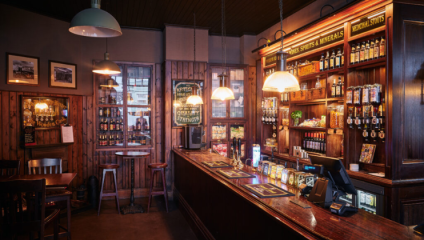
Karl Marx’s (rather epic!) Pub Crawl
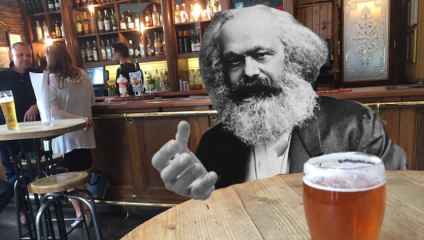
Speaking of pubs, there is a story that Karl Marx (yes, that Karl Marx - the father of Communism) got up to some rowdy behaviour with friends as they attempted a “beer trip” in which they would “take something at every saloon between Oxford Street and Hampstead Road” (i.e. along Tottenham Court Road). This was no mean feat, as, at the time (in the late 1850s) there were no less than 18 pubs along Tottenham Court Road!
Wilhelm Liebknecht, who went on to become a politician in the German Socialist Party, recalled how his drinking party (which included Marx) was invited to sit with some Englishmen at one pub. The conversation was light at first, but when one of his friends took offence to something trivial, Karl launched into a tirade praising the superiority of German music to prove that “the Englishmen, who had no music, were in reality far below the Germans”!
Things got heated and “fists were brandished in the air”, so the Germans made their way onto the street in order to cool down when one of them tripped on the pavement. He then took a stone and lobbed it at a gaslight above him, which shattered, and the whole entourage quickly followed suit, laughing the whole way.
The way Liebknecht tells the story, they were then chased by four (sober) policemen, who they managed to outwit by hiding in an alleyway until the policemen gave up their search, and the revolutionary rabble-rousers gave up their antics and headed home.
Another Divisive Figure (Who Lived at Fitzroy House)
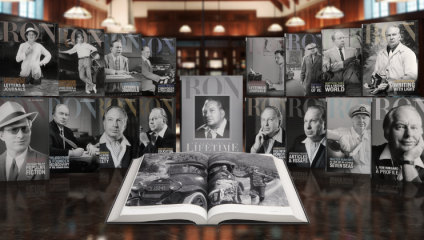
If you were to attempt Marx’s pub crawl today, before you got to the halfway point at Goodge Street you might notice the rather conspicuous Dianetics and Scientology Life Improvement Centre nestled between a Pret and a betting shop. While we don’t want to cast aspersions on anyone’s beliefs, it’s fair to say that the Church of Scientology (which counts Tom Cruise and John Travolta among its members) has been controversial, and - perhaps because of this controversy - shrouded in mystery, being variously described as a “cult, a business, a religion, a scam, or...new religious movement” (Wikipedia)
The centre houses “course rooms along with testing, film and seminar facilities providing the entire range of Introductory Services” (scientology-london.org.uk/), and is based here because of its proximity to the London home of Scientology founder L.Ron Hubbard, at No.37 Fitzroy Square - which, incidentally, was previously the home of George Bernard Shaw, the Irish playwright, polemicist and political activist. The house served as Hubbard’s base of operations in London, from which he spread his message worldwide. It is now a sort of museum to him and his works (whatever you think of the man, he had a pretty impressive output, earning the Guinness World Records for “Most Published Works by One Author”!).
The London Landmark that Didn’t Exist
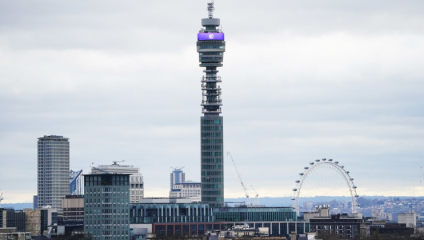
Looking out on London’s skyline, you can’t really miss the BT Tower (as it’s now known) which, at 189 metres, was the tallest building in London up until 1980. It was a place to be seen; Muhammad Ali was pictured taking in the view from the top of the tower back in 1966, and other famous faces like Mick Jagger were regulars at Britain’s first ever revolving (and aptly-named) Top of the Tower restaurant. But did you know that, for a long time, the tower never officially existed?
The tower was commissioned by the General Post Office, and had to be built so tall in order to secure line of sight for radio links and transmissions; because of its importance to British telecommunications, the Post Office Tower (as it was then known) was a state secret for years. The tower was ommitted from Ordnance Survey maps until the mid-1990s, and taking or owning photos of the tower was a breach of the Official Secrets Act!
Despite this the BT Tower is much-beloved, especially amongst students at the nearby University College London. Tony Benn, who opened the tower in 1966 as the Postmaster General at the time, even designated it as the UCL mascot after they petitioned him to do so. 2018 marked 50 years since the first official ‘race to the top of the tower’, when UCL faced off against a team of elite runners from Edinburgh University - the winner, from Edinburgh, ascended the 798 steps in 4 minutes and 46 seconds!

On the same street as the tower is the UCL student accommodation building Ramsay Hall, where the four members of the band Coldplay met and were inspired, in their 2005 song Fix You, to write the lyric “Lights will guide you home” (supposedly after a drunken night out!).
Fitzrovia’s Place in Music History
Coldplay aren’t the only band with roots in Fitzrovia - in fact, you could easily make it a fixture on many a musical tour of London; your first stop would have to be the Superdrug on Tottenham Court Road. Not obviously exciting, sure - but we’re here to tell you that below it, in a basement bar in the 1960s, The UFO Club was the centre of psychedelic London - for a short time Pink Floyd were employed there as the house band, until they signed to a record deal and their newfound fame made playing in the small bar too difficult.
Folk fans should head over to The King & Queen pub on Foley Street, which holds regular folk mights to this day and is famous for being the first place that Bob Dylan performed outside of the US.
Dylan, along with seemingly every big name in rock and pop music in the 60s and 70s, would also drink at The Speakeasy Club, another basement bar at the site of 48 Margaret Street; go for a bite to eat at K-Pop Korean restaurant or get coffee at Kiss the Hippo and revel in the fact that below your feet there was once a club frequented by the likes of The Beatles, The Rolling Stones, Jimi Hendrix and Marc Bolan - according to Pauline Cutler, who worked as a waitress there and whose account of the club you can read here, Keith Moon was always starting food fights, and Rod Stewart used to sing for pints at the bar!
